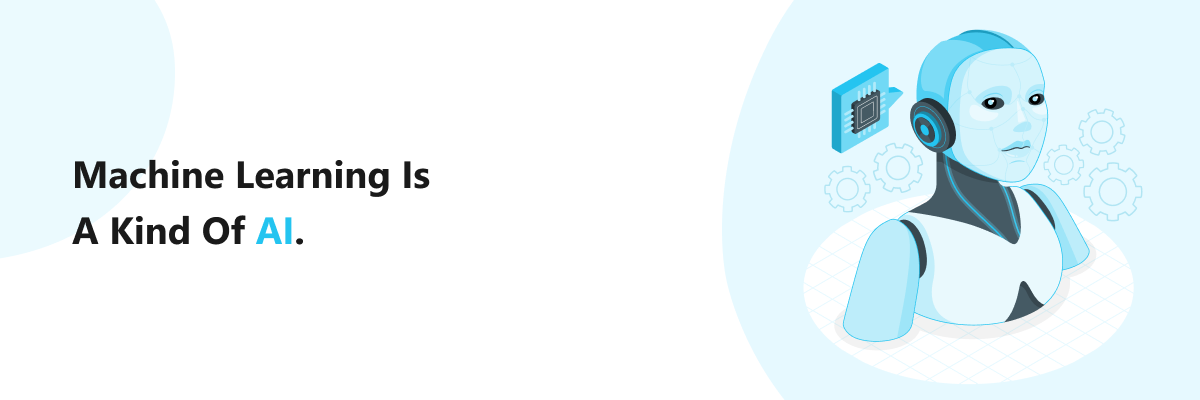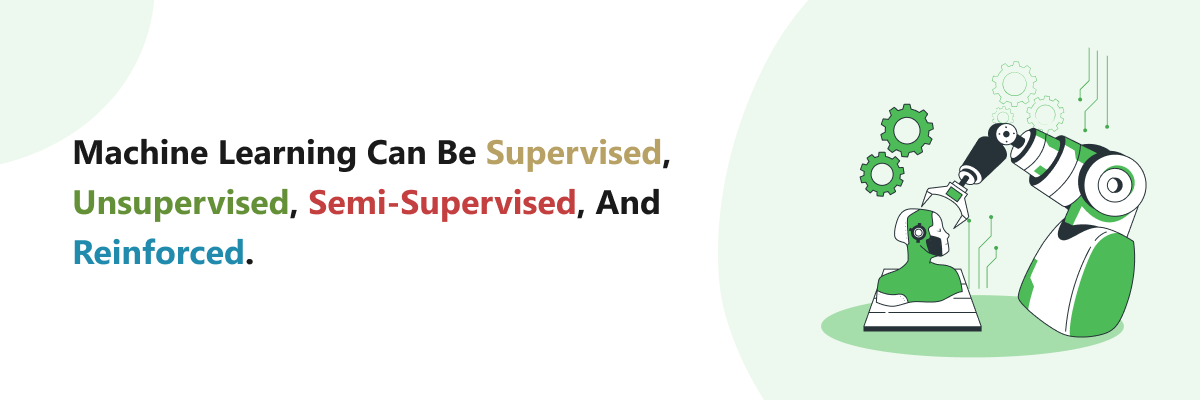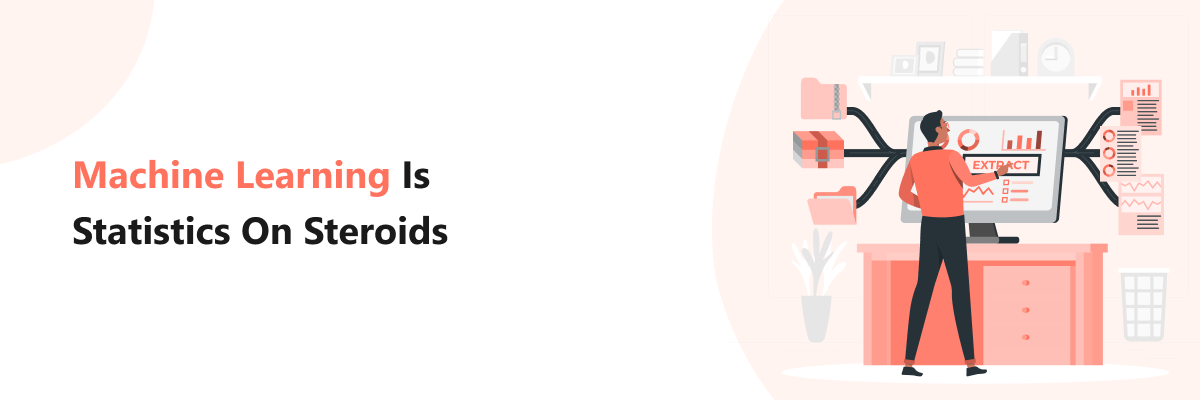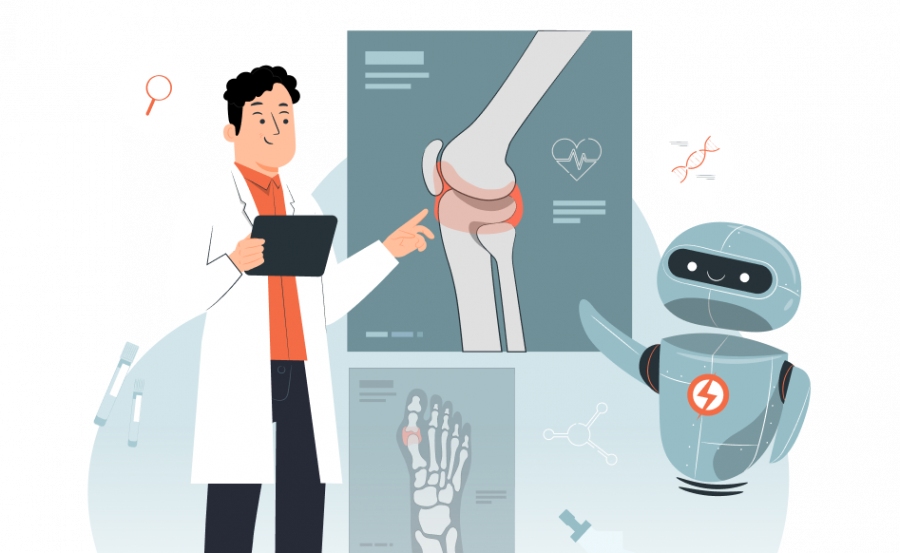Machines were created to make our lives easier, right?
Think about it! From the electric toothbrushes you start your morning to the air conditioners that cradle you to sleep, and all the million things in between, we are heavily reliant on technology and machines to help us live a more relaxed life.
Gone are the days when you had to spend large amounts of time and energy on tasks that are mundane or repetitive or complex in nature. I mean, when was the last time you sat down and exercised your brain cells with some mental math? Thank God for calculators, yet another powerful machine that helps us save time and energy!
Now that we have machines to help us live more fulfilling lives (I mean, what else do you do with all the free time machines create for us?), what if we tell you that they could…do more?
What if machines could predict your needs in advance and save you the trouble of spoon feeding input data every time? What if they learn from their mistakes and course-correct as and when required? In a nutshell, that’s exactly how machine learning works!
In this blog, we’ll take a quick look at what machine learning is, the types of machine learning, the relevance of machine learning models, and how machine learning can benefit a startup when used the right way!
So, What is Machine Learning?

Machine learning, or ML for short, is a kind of Artificial Intelligence that teaches software applications to become better and more precise at predicting results without a technical guy working in the background.
Read on to get an idea of how machine learning works in simple works, and also to explore the different practical applications of machine learning for startups.
How Machine Learning Works?

So, how does machine learning actually work?
Now that you have an idea about the types of ways in which you can use machine learning, let us help you take a better look at how machine learning works.
The nitty gritties and technicalities of machine learning is a vast field that will take months to pen down, but we can break down the basics for you here!
To help you understand the concept in simple terms, consider a machine as your child. A kid who grows up under your supervision and care and observes the world around him or her through intelligent eyes.
In order to communicate with your child, you should start teaching them a language you are familiar with such as English, or Arabic, or Spanish, whatever the language of your native place is.
When it comes to machines, that would translate to machine learning languages such as Python, R, or Java, whichever you prefer as a programmer.
Now, once your child understands the basics and picks up on the language you use, they can communicate with you easily without you having to teach them the same thing over and over again.
They will start remembering things from their past training and experience and use the knowledge they gather from their surroundings, analyse vast amounts of data such as sensory input data, and respond to the real world around them based on the learning and values you instil in them.
This is what machine learning is all about too! With the help of machine learning tools such as Scikit-Learn, Pytorch, Tensorflow, Google Cloud AutoML, and Weka, among others, you can train your machines to learn from experience, much like you would an intelligent child.
Based on the machine learning processes you implement – that is, the set of rules you teach your machine to follow in order to calculate their responses to external stimuli – machines such as your computer can utilise data analysis and problem-solving operations to predict new output values using historical data.
The terms such as big data and machine learning may be novel to you, but we can assure you that you have been using them for years, perhaps without knowing you were utilising one of the capabilities of machine learning. A very common example of the same is the recommendation engines you must have used at some point or the other in your life.
Or, what about the spam filters you have set up in your smart devices that automatically group suspicious messages under spams? It is yet another application of machine learning processes. Read on to know more about the other common uses of machine learning such as fraud deception, predictive maintenance, and…okay, no more spoilers!
Take note, however! Machine learning is not to be confused with deep learning. If you simply Google the keyword ‘machine learning vs deep Learning’, you will understand that deep learning is a facet of machine learning.
In machine learning, machines learn to think and act for themselves based on historical data using minimal human intervention, whereas in deep learning, machines learn to think using structures modelled after the human brain.
What Are the Types of Machine Learning?

So, machine learning has two broad functionalities, namely predictive models and sorting models. Predictive models are used to predict future outcomes with the help of existing and historical data while sorting models help predict the placement position of unsorted elements of data.
In general, machine learning can be classified into four broad categories based on the type of algorithms data scientists decide to use, which in turn is dependent on the type of outcome or result they want to predict. The four types of machine learning are as follows:
1. Supervised Machine Learning
Consider this type of training like the ones you would give babies who are helpless on their own. You need to point out things and label them so that your baby can comprehend what you want them to do. In essence, you need to guide the way.
In supervised machine learning, both the input and output of each algorithm is specified. The data scientists aid algorithms with labelled training data while defining the variables they want they expect the algorithm to utilise.
2. Unsupervised Machine Learning
Now, your baby is a little more grown up and able to handle chores by themselves. You don’t have to label anything for them anymore, they can figure it out on their own.
In unsupervised machine learning, data scientists use unlabelled data and are trained to analyse the datasets to see if they can find familiar patterns to build meaningful connections. In short, the training data and the output data are predetermined.
3. Semi-Supervised Machine Learning
This is a very relaxed method of parenting you can employ for your machine baby, who is now a teenager! They need a set of guidelines to floor, but should also be given the freedom to explore on their own.
It is a mix of supervised and unsupervised machine learning, where data scientists mostly work with labelled data, but also lets the machine learning model explore the available data and come to its own conclusions.
4. Reinforced Machine Learning
This is much like teaching your child to differentiate between prevailing opinions of right and wrong using the right methods to incentivise them. For example, every time they learn a new word, you give them a small chocolate as a treat.
In reinforcement learning, data scientists train a machine to follow clearly defined rules by giving it positive or negative cues as it completes a certain task. But, as with most children in our lives, the algorithm decides what steps it wants to take on its own for the most part! It is a trial and error process that ends up yielding vetted outputs in the end.
Read more: Types of Machine Learning Algorithms
3 Things You Need to Know About ML

Data scientists and data analysis the world over can tell you that the business world of today is driven by one thing. The very same thing they made a profession out of : data. And data is what drives machine learning.
If you are trying to leverage machine learning to grow your startup or gain an edge over your competition, you are certainly on the right track to business success. You can utilise machine learning to your advantage by understanding 3 basic simple yet powerful things about it:
1. Why is Machine Learning Important in Today’s Business World?
The advantages and uses of machine learning are vast. From personal virtual assistants who are programmed to make your life easier and function with the aid of cloud storage and neural networks to assisting in the function of self-driving cars, the number of ways machine learning assist’s man’s progress in the business world is mind-blowing if you think about it deeply.
In fact, one of the most commonly known examples of machine learning at its best is the predictive recommendation capability of machine learning algorithms that is widely used by business giants such as Amazon and Facebook.
That’s the beauty of machine learning, in a way: it is industry agnostic and can work well across different types of businesses such as:
-
-
- Computational finance
- Image processing and computer vision
- Computational biology
- Energy production
- Automotive, aerospace, and manufacturing
- Natural language processing
-
2. When Should You Use ML?
The simple answer is that you can use machine learning anywhere and everywhere and you will get improved outputs. But, is it really wise to use machine learning just because you can?
The first and major disadvantage of machine learning tools is that it can put a strain on your pocket. This is because machine learning processes are mostly driven by experienced data scientists, whose salaries will definitely put a dent in your bank. Not to mention the fact that machine learning processes typically require complex software infrastructure that could take high capital investments.
So, it is important to reserve the use of machine learning to areas of your business that can be enhanced with machine learning while also ensuring financial feasibility. Here are a few use cases where you can invest in machine learning processes:
-
-
- When visual equations are too complex.
- When the rules of tasks at hand are dynamic.
- When the nature of data input varies.
-
3. How Can Machine Learning Benefit a Startup?
A startup is a chaotic workplace, if not streamlined the right way. There are a million tasks to do and each stakeholder usually ends up wearing multiple hats to get things moving. In such an environment, machine learning algorithms can go a long way to make business processes smoother and your life easier.
Here are a few of the many ways machine learning can benefit your startup:
-
-
- Understanding Your Audience: As part of the startup business culture, you will know the importance of research to understand who your audience is, how they will respond to your products, and the best marketing strategies to engage with them.But, even if you get copious amounts of data, there’s still the data sorting and analysis to do. This is where machine learning comes in. It can help you predict your audience behavior based on variables such as location, demographic, age, and gender, among others.
- Product Feasibility Studies: If your final product does not appeal to your audience, you will be in quite a pickle when you are ready to launch your product to the market! Machine learning processes can help you understand the popularity of yourproduct among the target audience by analysing your audience and comparing their preferences with what your product has to offer.
- Predicting the Needs of Your End Users: Machine learning can help you power your business decisions with the help of predictive analysis based on consumer trends. If you know exactly what your users want, you won’t waste time and resources going in the wrong direction to achieve customer satisfaction.
- Automation of Business Processes: If your business processes are automated, your startup can save a lot of time and energy on priority tasks that require critical human thinking such as planning. Machine learning helps you optimise your business outputs by automating the mundane tasks and helping you avoid bottlenecks in your business processes.
- Efficient Data and Tasks Handling: Machine learning can help you manage large amounts of data in an efficient manner and also help you plan, optimise, and execute tasks in a seamless manner, all of which will result in better outputs for your startup business.For example, think of how much our lives and our capability to execute tasks are improved thanks to our very own virtual personal assistants like Siri! Yup, you guessed it! Siri!
-
Read more: How Machine Learning Can Help in Solving Business Problems
Is It All Good News?
As with anything in life, machine learning also has two sides. While the pros outweigh the cons, machine learning also comes with some disadvantages.
Other than the high costs involved, a common problem encountered by those trying to utilise machine learning to their advantage is machine learning bias.
Much like human beings, the machines you train using machine learning languages may develop a bias towards certain population sets and become discriminatory in nature, which in turn could lead to regulatory and reputational harm for enterprises that that run their core business processes with tainted or inaccurate Machine Learning models.
This bias can develop due to a number of factors such as when algorithms are trained on data sets that include certain populations or contain errors in data.
All said and done, the pros of machine learning make the cons pale in comparison, so you need not dwell too much on them.
Takeaway
Data and statistics (that is, in-depth data analysis) makes the world go around when it comes to businesses. And let’s face it, machine learning is like statistics on steroids!
Whether it’s for fraud detection purposes, recommendation engines, image recognition technology, or a million other applications of Artificial Intelligence (AI), one thing is clear to anyone who takes the time to do the research. Machine learning, driven by Big Data, is the future of technology as we know it.
It not only makes our lives easier, but also enhances the way we perceive the world around us and make better decisions. With machine learning to reduce the load of your mundane and manual tasks, you get free time to bake the cake and eat it too!
To know more about how we can help you harness the power of machine learning to drive your startup growth, book a free consultation today.




